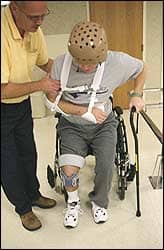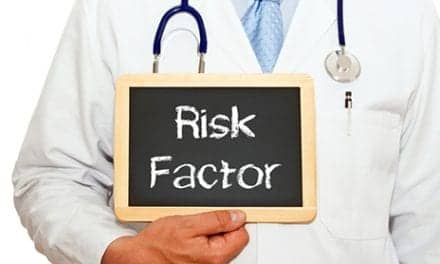Patients who received a novel treatment that combines vagus nerve stimulation (VNS) and rehabilitation showed improvement in upper body motor impairment compared to those who received a sham (inactive) form of stimulation and rehabilitation, according to results from a study published recently in The Lancet.
“This is incredibly exciting news for everyone involved in stroke rehabilitation and functional restoration and represents a unique intersection between neurosurgery and neurorehabilitation. These study results open up new possibilities for stroke patients, allowing them to reclaim more arm function even years after having a stroke.”
— Charles Liu, MD, PhD, the lead neurosurgeon of the study and director of the USC Neurorestoration Center of Keck Medicine of USC
VNS Versus Sham Stimulation
In this international, multi-center clinical trial, 53 participants with moderate to severe arm weakness 9 months to 10 years post-stroke received rehabilitation paired with VNS via the Vivistim Paired Vagus Nerve Stimulation System from MicroTransponder Inc, who sponsored the study.
Fifty-five patients within the same parameters received a sham stimulation. The trial was randomized and triple blind.
Those receiving the nerve stimulation had a wire inserted into their neck that wrapped around the vagus nerve. The wire was then connected to a pulse generator device implanted in the chest. Those receiving the sham received placebo implants.
After the surgical procedure, all patients received 6 weeks of in-clinic intense physical therapy, which included tasks such as reaching and grasping, simulated eating and opening and closing containers. After the in-clinic period, patients continued treatment with a course of daily home therapy.
When the two patient groups were compared, those receiving the nerve stimulation scored higher on several standardized measures of upper arm functionality, a media release from Keck Medicine of USC explains.
VNS Trial Data
In a separate release, MicroTransponder Inc shares the following data from the clinical trial:
The multi-center, double-blinded, randomized controlled trial enrolled 108 subjects that were up to 10 years post-stroke with moderate to severe upper extremity impairment.
Subjects in the study were randomized to either the Paired VNS group (intense physical therapy paired with active VNS) or Control group (intense physical therapy paired with sham VNS) and did 6 weeks of in-clinic therapy followed by 3 months of home-based therapy.
After in-clinic therapy, subjects in the Paired VNS group showed a 5.0 point improvement in the Upper Extremity Fugl-Meyer Assessment compared to 2.4 points in controls (p=0.001). The Wolf Motor Function Test score also improved after Paired VNS compared to controls (0.46 vs 0.16, p<0.0001). After 3 months of home-based therapy, the number of participants achieving a clinically meaningful response in upper limb impairment after Paired VNS was approximately twice that of controls.
The study showed that participants who received Paired VNS had clinically meaningful improvements in both motor impairment and function compared to controls. Improvements with Paired VNS were also observed in quality-of-life measures. There were no unexpected adverse events or serious adverse events associated with the Vivistim System.
The VNS System
The Vivistim Paired VNS System is designed to stimulate the vagus nerve during task-specific rehabilitation. Stimulation of the vagus nerve triggers release of brain neuromodulators including acetylcholine and norepinephrine that strengthens motor circuits associated with movement, enabling the brain to effectively relearn the task, MicroTransponder Inc explains in its release.
“Not only were the results clinically meaningful, the fact that these patients were at least nine months post-stroke and in some instances years out, points to the possibility that meaningful improvements can be achieved even years after a stroke.
“For too long, stroke patients have faced limited options for recovery. This new treatment signifies a breakthrough that could be life-changing for many stroke patients and also represents an approach that will certainly be explored for many other functional restoration applications in the future.”
— Charles Liu, who also serves as chief of innovation and research and chair of neurosurgery and orthopedics at Rancho Los Amigos National Rehabilitation Center
[Source(s): MicroTransponder Inc, Keck Medicine of USC, PR Newswire, Newswise]
Related Content:
Vivistim Therapy “Rewires” Brain to Help Move the Arms Post-Stroke
Vagus Nerve Stimulation Possible Boost to Post-Stroke Motor Skill Recovery
Plasticity Therapy Paired with Motor Skill Rehab Could Double Movement Recovery





